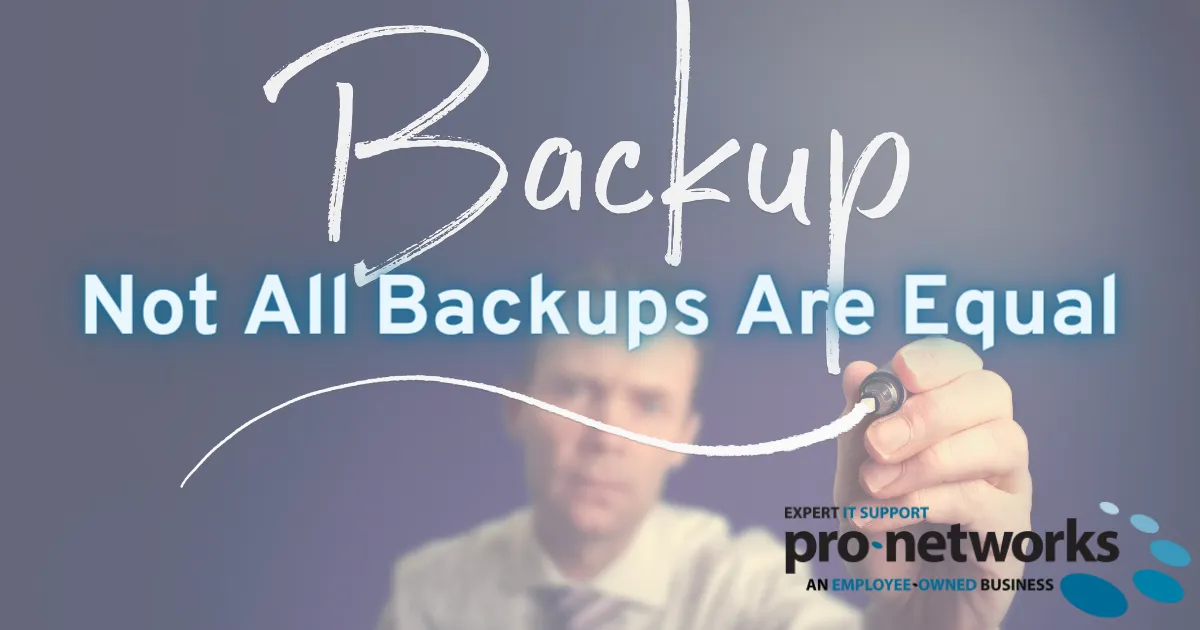
Your data is backed up, isn’t it? You know it is, your IT team have told you – but how is it backed up? Where is it backed up to and how often do the backups take place?
What is the process for recovering not only your data, but your full infrastructure from a serious hardware failure? How much downtime would you expect or accept, and when did you last test your backups?
As computer technology has diversified so has the number of backup options to support these changes.
While this blog deals mainly with backup up a more traditional on-premise environment, your business needs to know its cloud services are securely backed up. Whether this is a custom-built app, Office 365, or any web-based business application – you need to know how and where it is backed up.
One of the first decisions you need to consider is how much downtime you would be prepared to accept. The Recovery Time Objective (RTO) is the key factor when considering the most practical solution for your business.
Basic Backups
Simply copying files from your “live” location to a different location is a backup. The backup location can be onsite or offsite (ideally both) and should it be needed files can be recovered from the backup location back to the live location. This type of backup is the least expensive and has the slowest RTO and as such, it should be considered the bare minimum.
Image Backups
Backing up the entire drive structure (and not just the files on it) is an image-based backup and in addition to recovering files, gives the added advantage that disk structures can be recovered in the event of a full hardware failure. While the RTO is faster than with basic backups, you should still expect days of disruption.
Replication
If a faster RTO is required you should be looking at replication as your failover solution. A replication solution maintains a recent mirror of your infrastructure on duplicate hardware. This means that if the primary hardware suffers a fault or malfunction the secondary hardware can be brought live very quickly (minutes vs hours/days for other solutions) and users can carry on with minimal disruption.
The secondary hardware can be either onsite, giving generally 5 minutes behind live replication, or offsite, giving a 15 minutes behind live replicated disaster recovery solution. As additional hardware is required for this solution this is the more expensive option, but when uptime is mission-critical your backup solution needs to be able to support this.
Pro-Networks can help you with all of your backup solutions, both onsite and offsite - speak to us today to make sure your data is safe!
